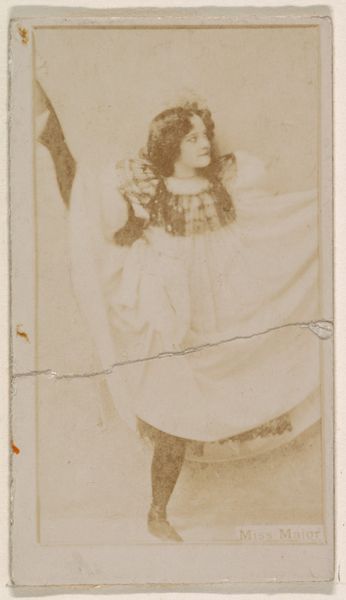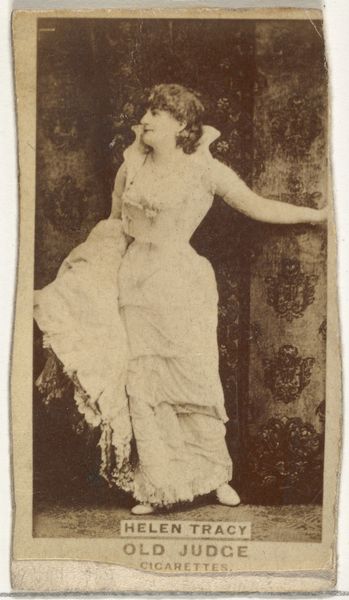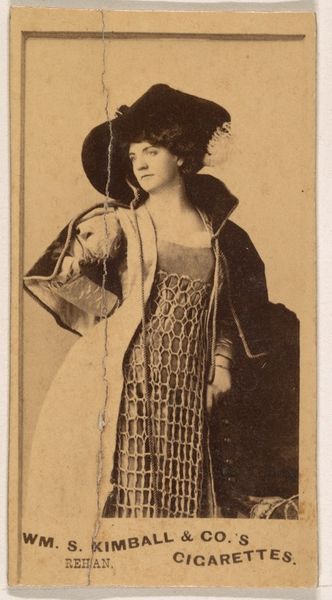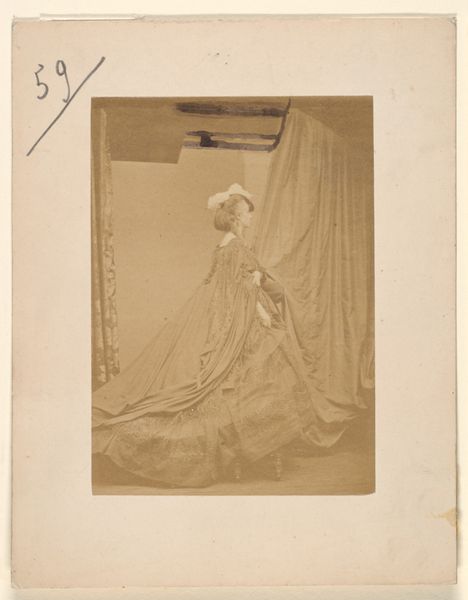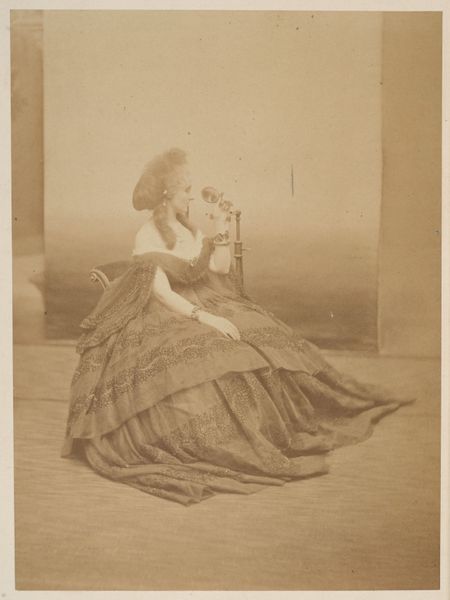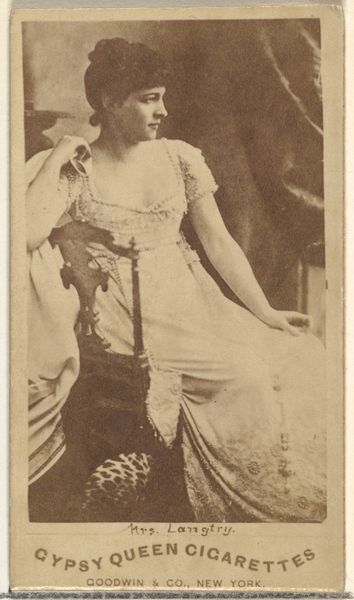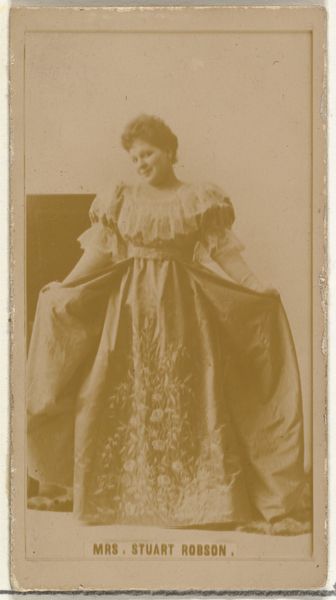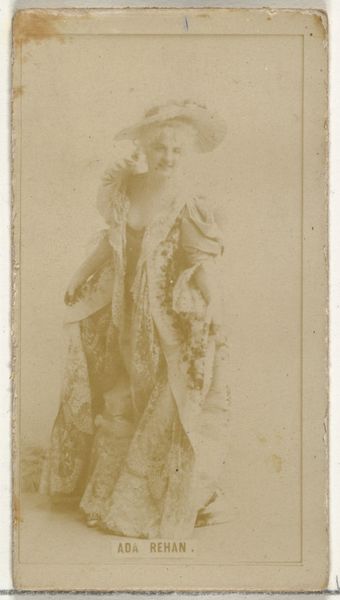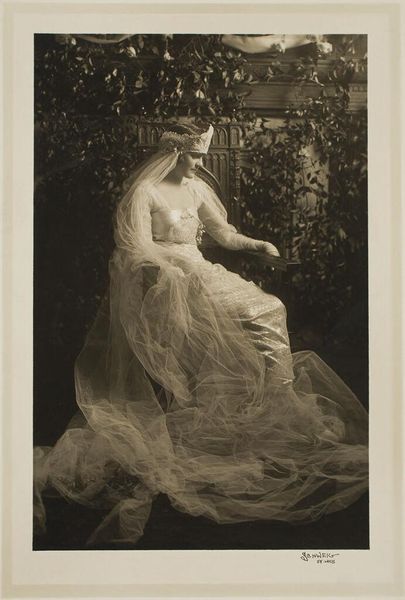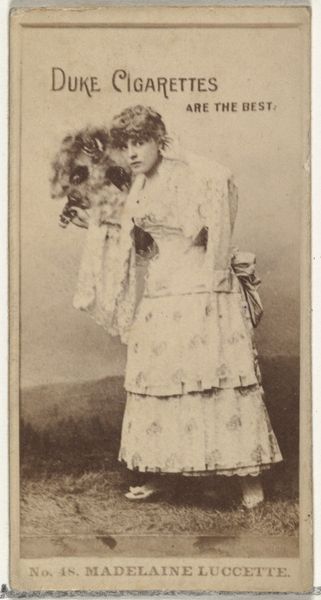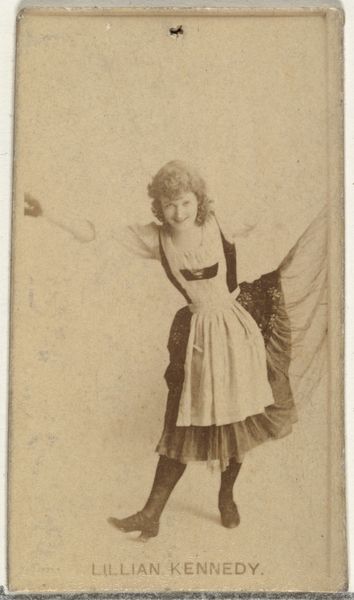
Copyright: Public Domain
Pierre-Louis Pierson captured this hand-colored photograph, titled "Reine d'Etrurie," in the 19th century. The sepia tones lend the image a dreamlike quality, softened by delicate hand-applied colors that emphasize the subject’s regal attire. The figure, presented in profile, is draped in fabrics that dictate the structure of the composition. Note how the fabric’s heavy fall from shoulder to floor establishes a dramatic diagonal, bisecting the pictorial space. The direction of this form creates a reading of the image in two triangular areas. A darker, more intimate space is contrasted against the light and expansive negative space in front of the figure. This contrast is not just visual; it creates a semiotic code, highlighting themes of power, visibility, and historical representation. This portrait is not merely a depiction but an engagement with the theatricality of representation, challenging viewers to look beyond the surface. Consider how the artwork destabilizes our understanding of photography as a medium, through its reinterpretation and use of hand coloring. The use of color introduces an interpretive layer, transforming it into a commentary on artifice and identity.
Comments
No comments
Be the first to comment and join the conversation on the ultimate creative platform.
